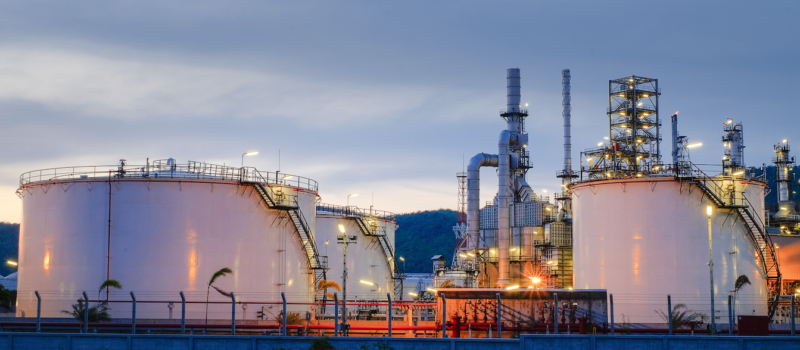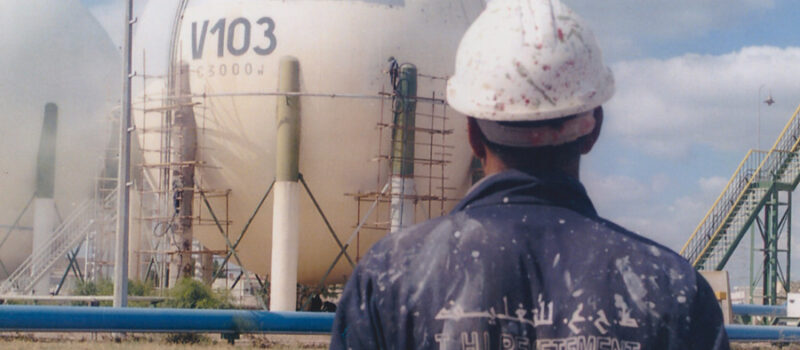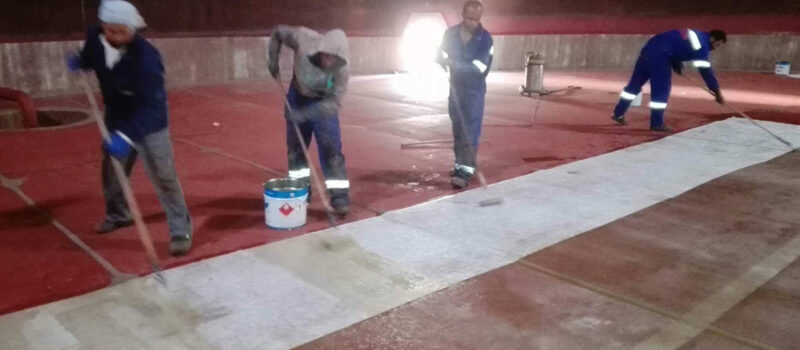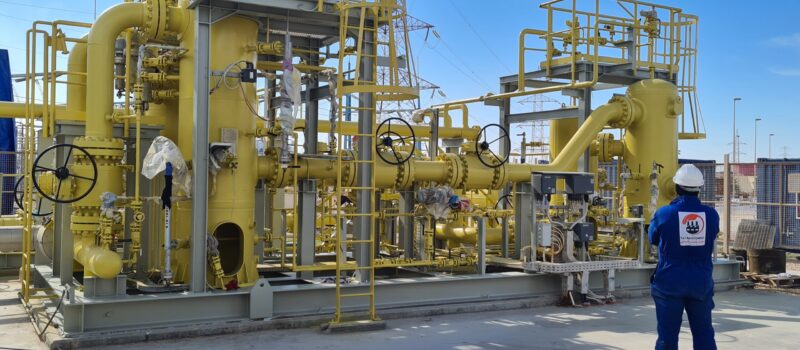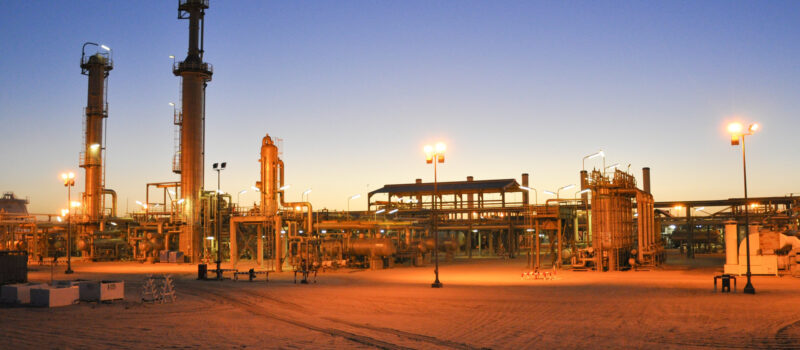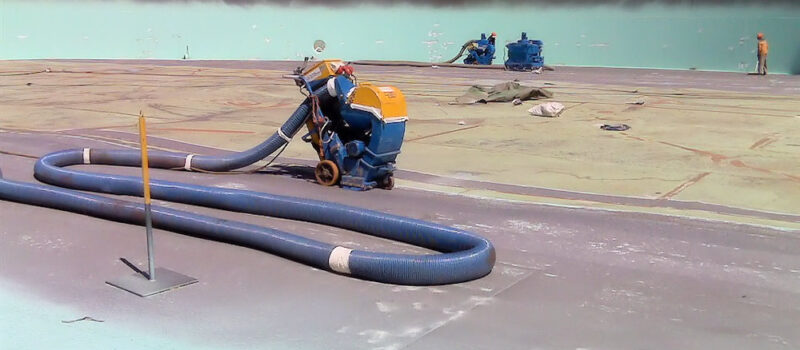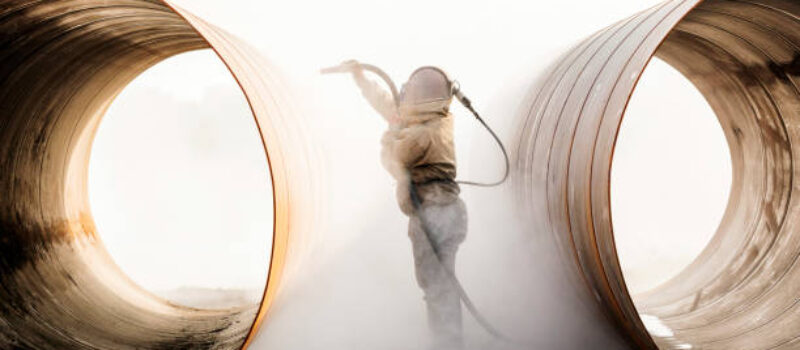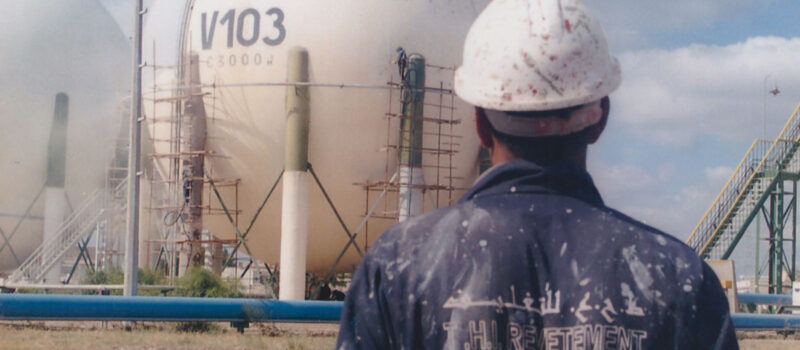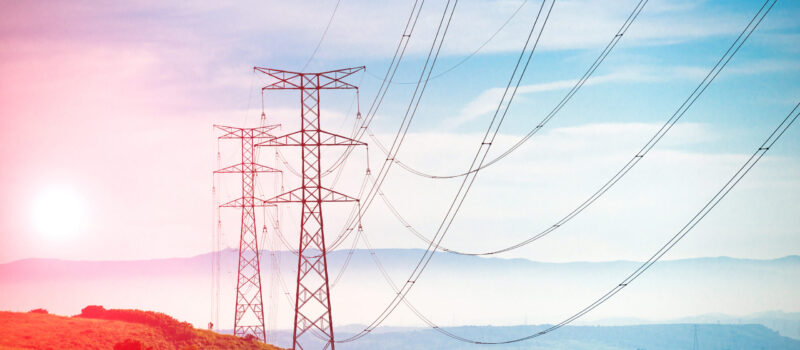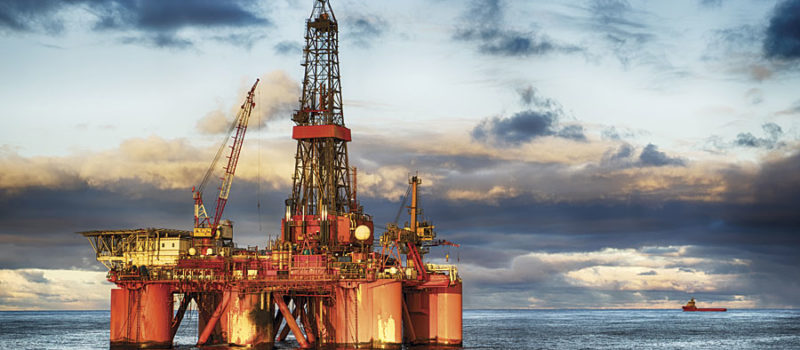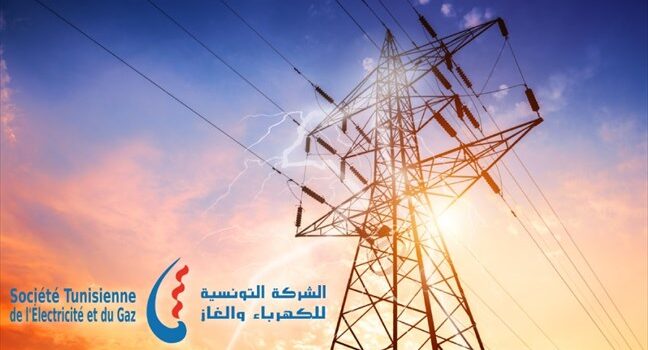 Shot blaster machine for surface preparation
Shot blaster machine for surface preparation
1- What is shot-blasting (or Grit blasting):
- A technique of blasting shot onto the surface of an object to change its surface structure.
- A surface treatment technique that aims to improve the appearance of the part.
- Quite similar to sandblasting.
- Done by blasting through small steel balls which are thrown at high speed, continuously.
During a shot-blasting operation, the pressure is high to obtain a large surface roughness.
The Grit blasting operation achieves the preparation levels SA2.5 or SA3.
The effectiveness has been proven on different types of parts: in the presence of rust or scale or contaminating agents such as salts, dust, oils, grease, etc…

2- Other Advantage :
Some parts have microscopic cracks (invisible to the naked eye) which cause, in use, leakage defects due to internal pressure. The grit blasting closes these cracks by also improving the appearance of the parts. This is an additional guarantee against corrosion.
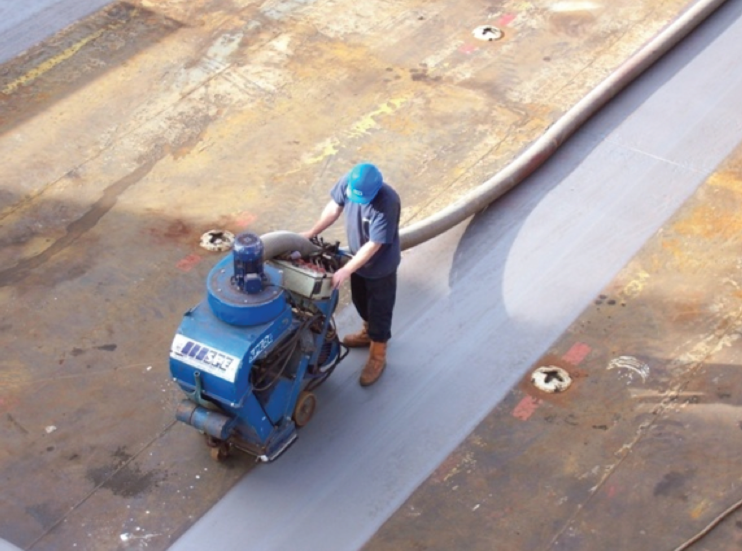
3- Abrasive used for shot-blasting:
For shot-blasting, steel shot is used (round & angular high carbon steel shot, round & angular stainless steel shot, etc.)
3-1- Round abrasives:
Sprayed during a shot-blasting operation are stripped by friction and inertia. Used in turbine machines, the surface is matted, minimal roughness.
3-2- Angular abrasives:
For shot-blasting: they are crushed and sieved. This operation creates cutting edges which projected at high speed, mechanically unwraps the surface. The crumbling reduces the size of the product but regenerates the edge. The residue turns into dust.
4- Industrial sectors that use shot-blasting:
The oil industry uses shot-blasting, particularly for tank bottoms but also for dresses, for the chemical industry, grit blasting is used for tanks and in particular for concrete floors, electrical energy cites also use shot-blasting for tanks and concrete floors,
Other industries also use, such as the automotive industry for engine parts, the aeronautical industry for mechanical parts, the shipbuilding industry for surface cleaning before painting.

5- Type of shot-blasting:
5-1- Horizontal :
For flat and horizontal surfaces, examples:
– Tank roof
– Tank bottom
– Concrete floor
– Upper deck of the boat
5-2- Vertical :
For flat and vertical surfaces, examples:
– Tank Dress
– Concrete wall
– Concrete silo
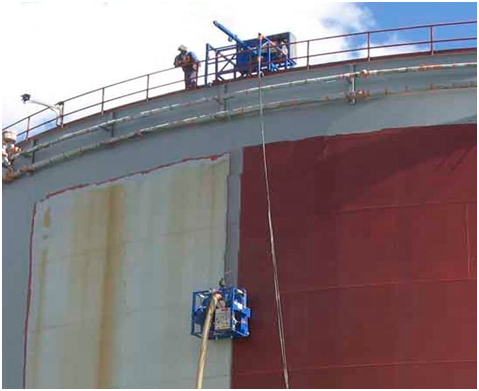
6- Type of mobile shot blaster:
6-1- Steel shot blaster:
They are characterized by a drive motor with sufficient power from 11KW up to 22.5KW to enable it with sufficient speed and force and capable of stripping steel.
6-1-1- Horizontal steel shot blaster
It is intended only for horizontal and contained surfaces (sheets) that are outdoors.
6-1-2- Horizontal steel shot blaster Special for inside tank:
It is intended for horizontal and contained surfaces (sheet metal) which are inside storage tanks, this shot blaster has the possibility of being dismantled in separate parts and introduced through manholes of 60cm in diameter.
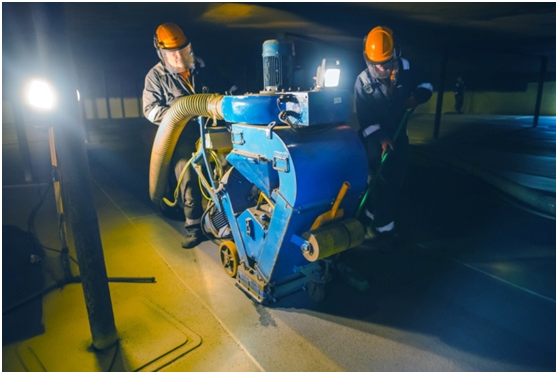
After reassembly and use, the reverse operation is carried out: disassembly, release through the manhole and reassembly outside the tank.
6-1-3- Vertical steel shot blaster:
It is intended only for vertical and contained surfaces (sheets) that are outside.
6-2- Concrete shot blaster:
They are characterized by a drive motor with lower power but sufficient and capable of stripping the concrete without damaging it.
Some of our projects;

